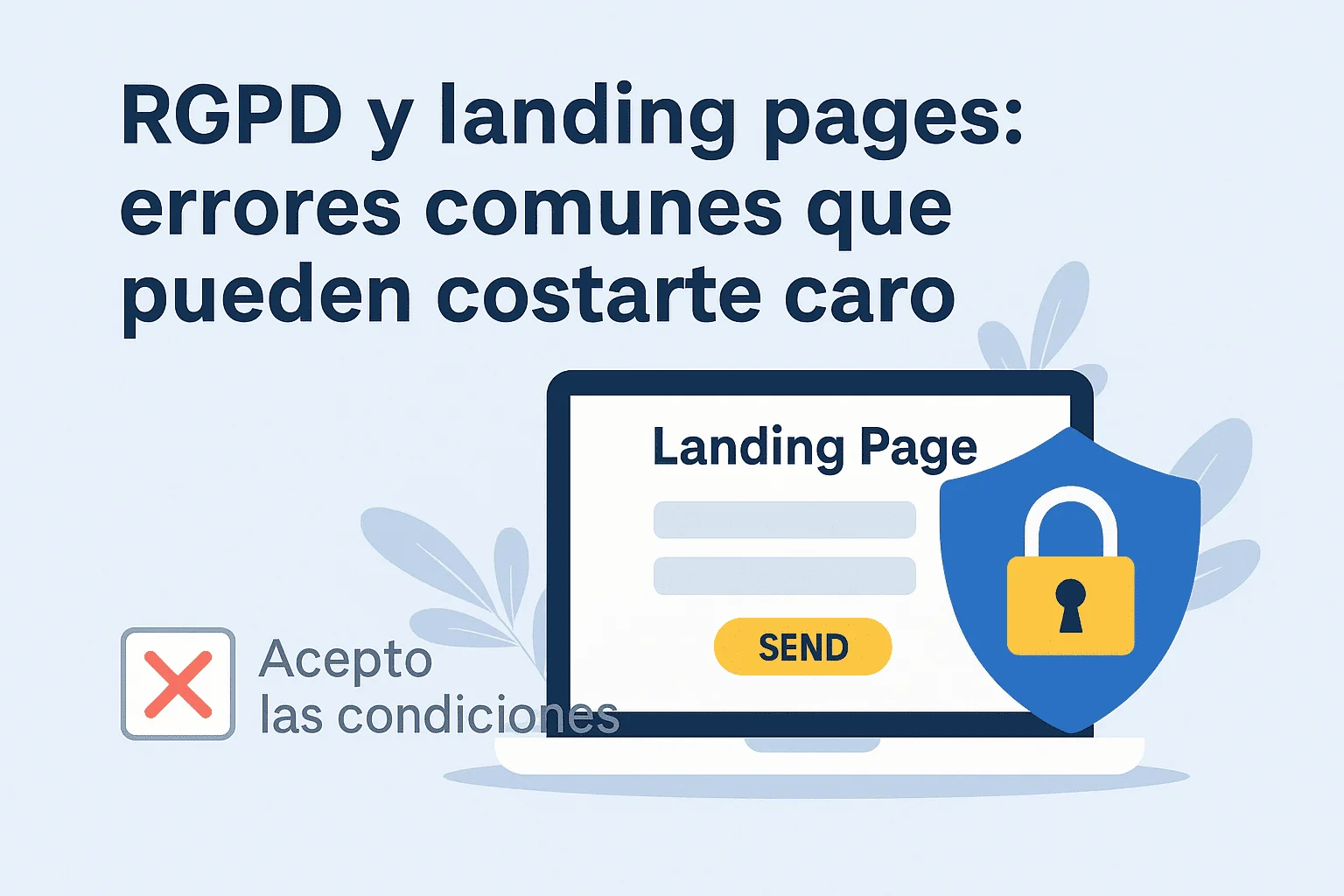What Happens If You Don’t Have Terms of Use for Your App?
Launching an app without terms of use exposes you to lawsuits, content copying, and legal liability. Find out what you should include.
Read more →
In the world of digital marketing, landing pages are key tools for capturing leads, converting users, and growing your business.
But if you don’t design them in compliance with the General Data Protection Regulation (GDPR), you might be violating the law without realizing it.
And it’s not just about a misplaced checkbox.
The Spanish Data Protection Agency (AEPD) has made it clear: landing pages that collect personal data must meet legal obligations from the very first interaction.
In this article, we explain the most common mistakes and how to avoid them if you want to convert users without facing penalties.
---
When your goal is to capture leads — subscribers, potential clients, or users interested in your product or service — you must ensure compliance with these key points:
Every form that collects personal data must include a basic data protection notice.
This notice must include at least:
- Identity of the data controller (individual or legal entity).
- Purpose of the data processing.
- Legal basis for processing (consent, contract performance, legitimate interest, etc.).
- The possibility to exercise ARSULIPO rights (access, rectification, erasure, restriction, portability, and objection).
- A link to the full privacy policy.
🔹 Legal basis: Article 13 GDPR and Article 11 of the Spanish Organic Law 3/2018 (LOPDGDD).
Consent must be freely given, informed, specific, and unambiguous.
This means:
- No boxes checked by default.
- A separate checkbox for each purpose (e.g., one for receiving commercial info, another for sharing data with third parties).
- It must be as easy to withdraw as it was to give.
⚠️ The AEPD has fined websites for using pre-checked boxes or combining multiple purposes in one consent.
Such misleading practices are known as dark patterns.
---
A common mistake is showing only a “Submit” button without any legal text or visible privacy policy.
This violates Article 13 GDPR and can result in sanctions, especially in large-scale marketing campaigns.
Combining all purposes into one checkbox (“I accept the privacy policy and agree to receive marketing communications”) does not constitute valid, specific consent.
Many landing pages install tracking or advertising cookies immediately upon loading, before the user has given consent.
This is illegal under Article 22.2 of the Spanish LSSI and AEPD Guidelines.
🔹 Remember: non-essential cookies cannot be installed without prior consent.
If you process personal data (name, email, interests, etc.), you need a clear legal basis.
In the context of a landing page, this is usually the user’s consent (Art. 6.1.a GDPR) — but not always:
- If there’s an ongoing contract (e.g., downloading a resource tied to a purchase), it could be contract performance (Art. 6.1.b).
- If it’s B2B communication based on legitimate interest, Art. 6.1.f may apply — but you must justify it properly and offer an opt-out mechanism.
---
The AEPD and the European Data Protection Board (EDPB) have warned against using dark patterns to obtain consent.
Design tactics that manipulate or mislead users into giving consent, such as:
- Forms that hide the rejection option.
- Prominent “accept” buttons with barely visible “reject” options.
- Cookie settings that make it difficult to refuse all with one click.
🔹 These practices not only affect consent validity but also transparency, and can lead to sanctions for lack of good faith in data processing.
---
GDPR violations can result in fines of up to €20 million or 4% of global annual turnover, especially if data processing is deemed non-transparent or lacking valid consent.
In the case of landing pages, even small-scale data collection can trigger broader investigations.
It may also lead to:
- Campaign blocks.
- Reputational damage.
- User complaints.
---
✅ Accessible privacy policy (visible link).
✅ Basic legal notice next to the form.
✅ Independent checkboxes for each purpose.
✅ Only essential cookies active by default; others only after consent.
✅ Transparent setup: no hidden or confusing rejection options.
---
At Legal Core Labs, we help entrepreneurs, agencies, and digital businesses audit and review their online lead generation processes.
We can review:
- Your entire acquisition funnel.
- Forms and legal texts.
- Cookie settings and banners.
- Risks from dark patterns or poor practices.
📩 Request your legal funnel audit and ensure your conversions come without legal risks.
---
Yes. Whenever you collect personal data on a landing page, you must clearly link to your privacy policy and show a data protection notice next to the form.
No. Under the GDPR and AEPD guidelines, consent must be free, informed, and explicit.
It cannot be pre-ticked or grouped with other purposes.
You are violating the LSSI and AEPD guidelines.
Non-essential cookies must remain blocked until the user explicitly consents.
Only if you can justify it properly and allow users to easily object.
In lead generation, consent is generally the safest legal basis.
Yes. It has already imposed fines for lack of information, grouped consent, dark patterns, and improper cookie use.